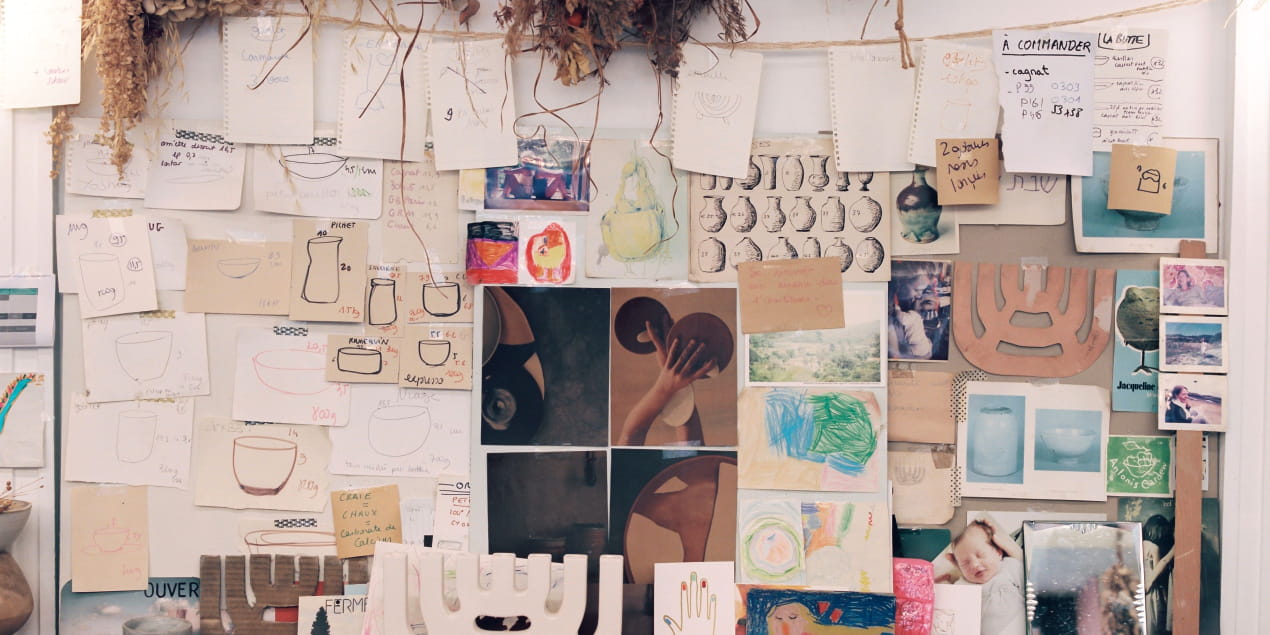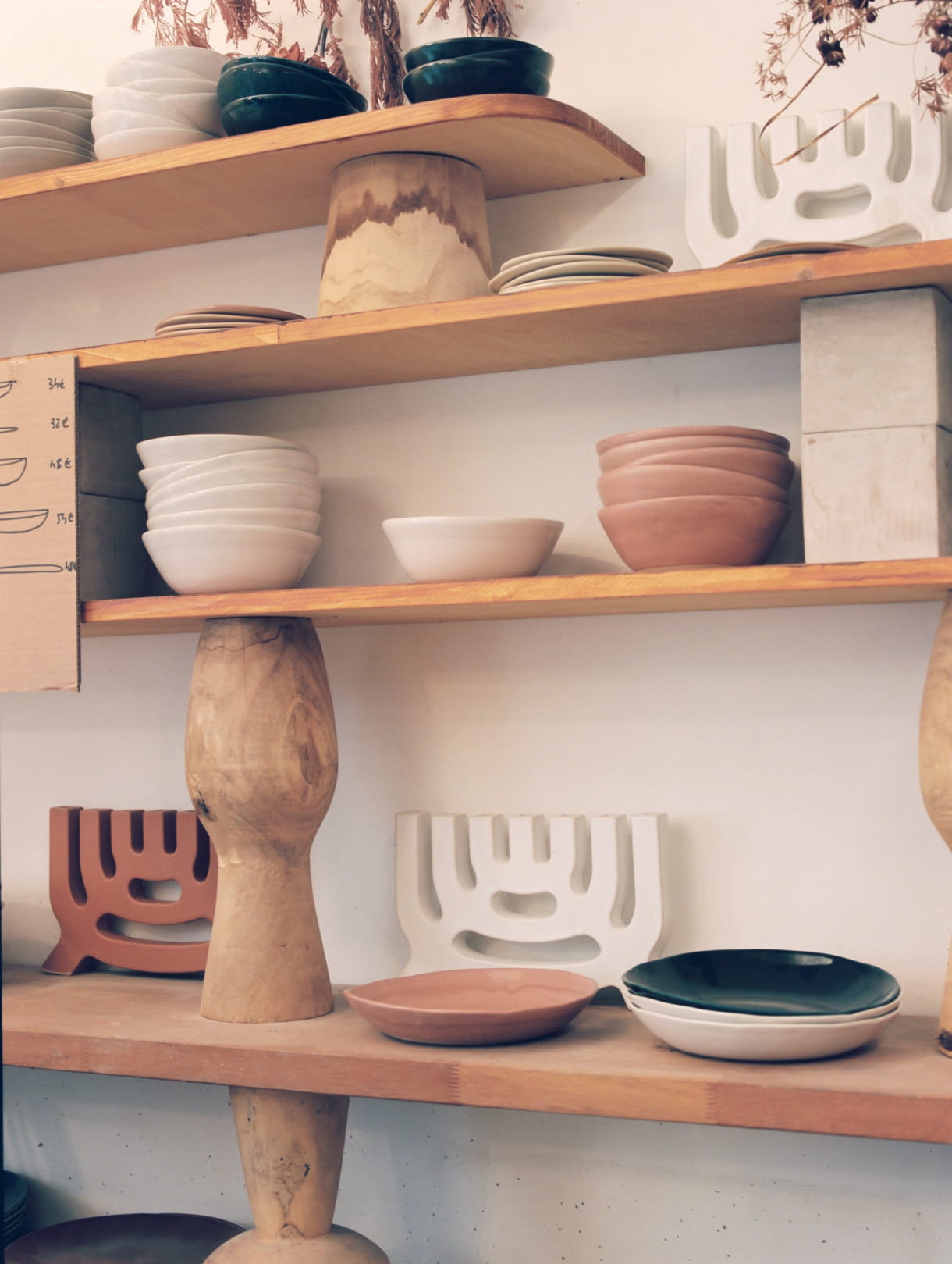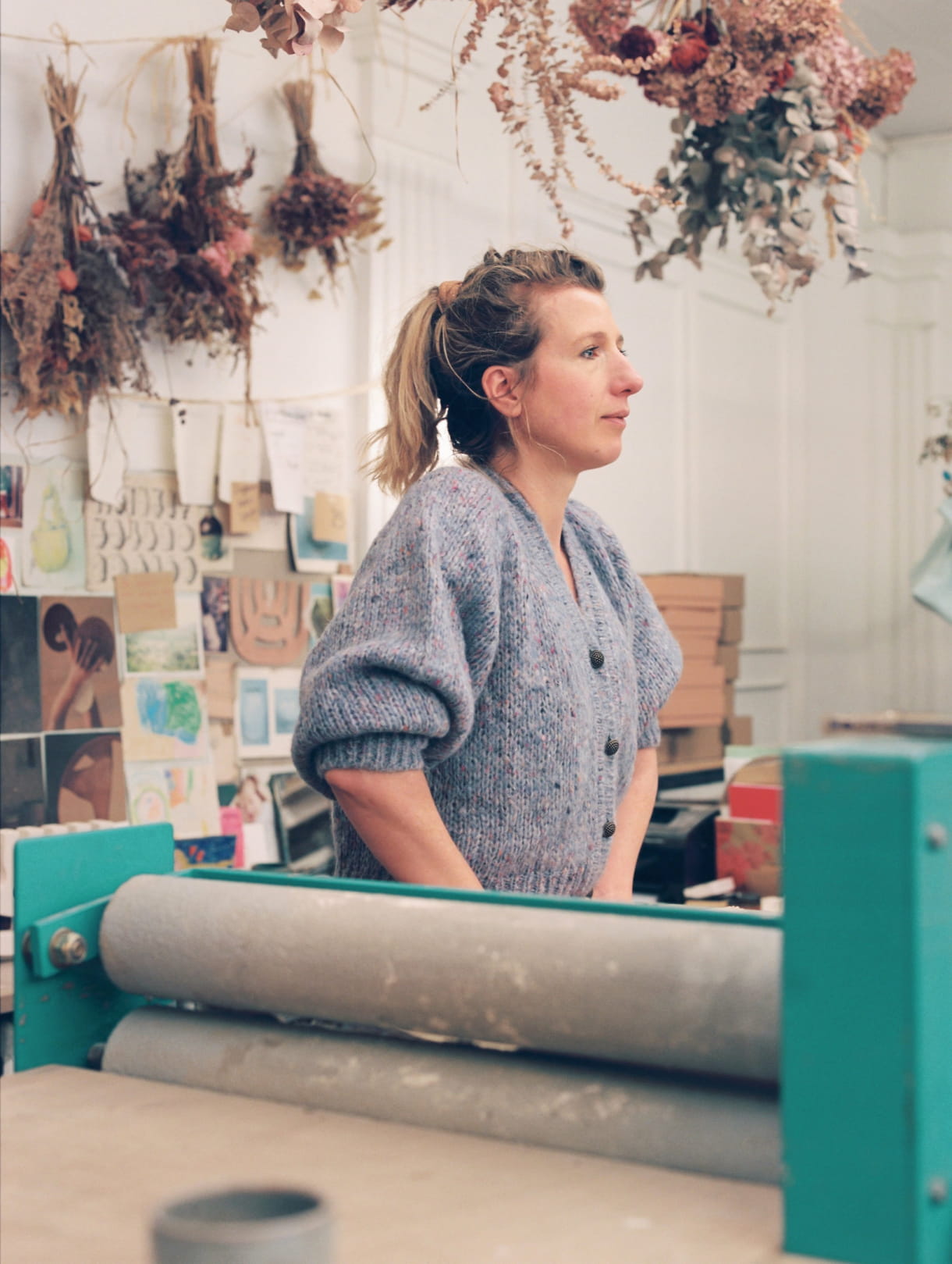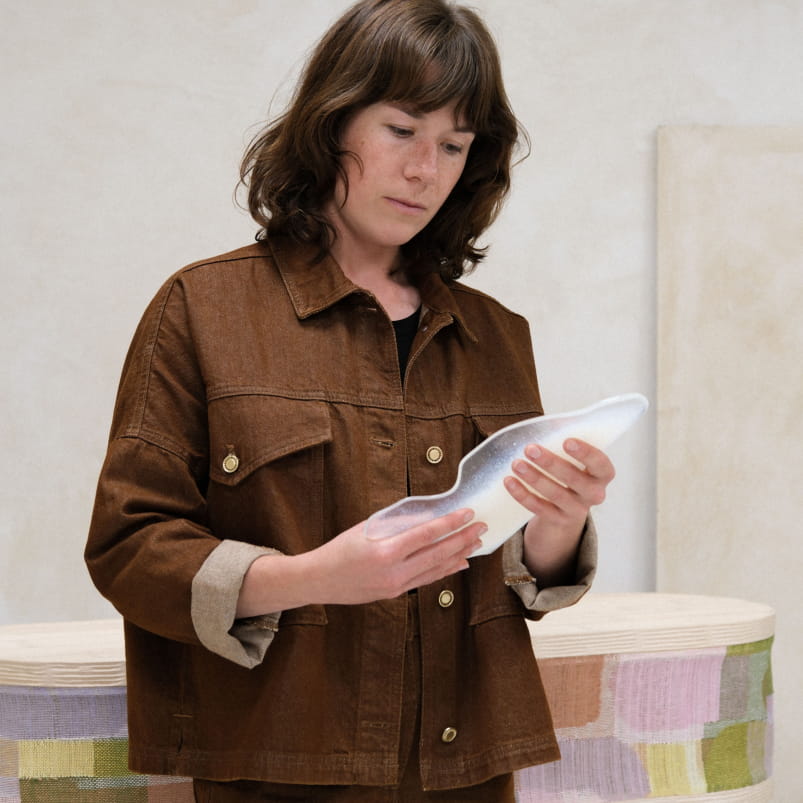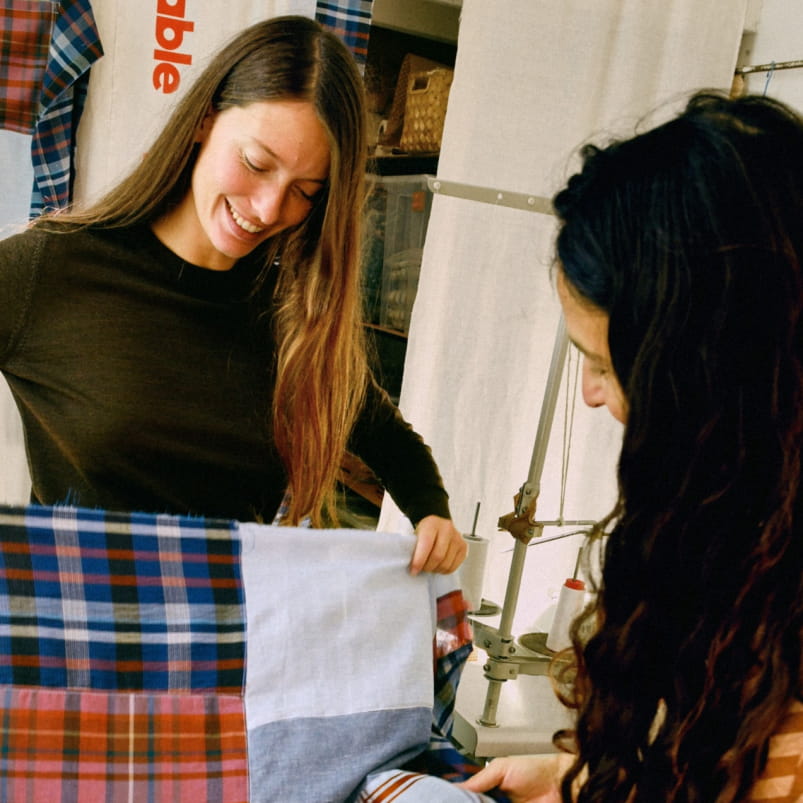Photograhies : TIMOTHÉE CHAMBOVET
Ever since she was a child, Marion Graux has had a taste for festive tables. The pleasure of the preparations, the joy of choosing among the crockery, deciding which plates her family and friends will use for a convivial lunch or dinner. These very rituals led her to ceramics, which Marion sees as useful and practical. She trained with country potters in the village where she spent her summer holidays, in the Drôme Provençale. A rural apprenticeship in which rigour and humility prevailed. And emotion, too. Chefs were quickly captivated by the values and principles emerging behind her creations. A meeting with Marion in the heart of her Parisian workshop.
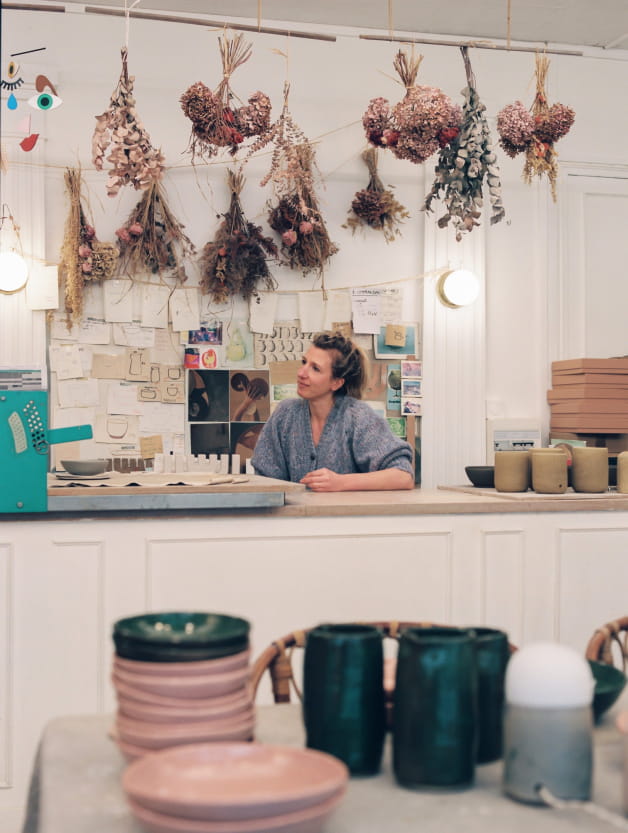
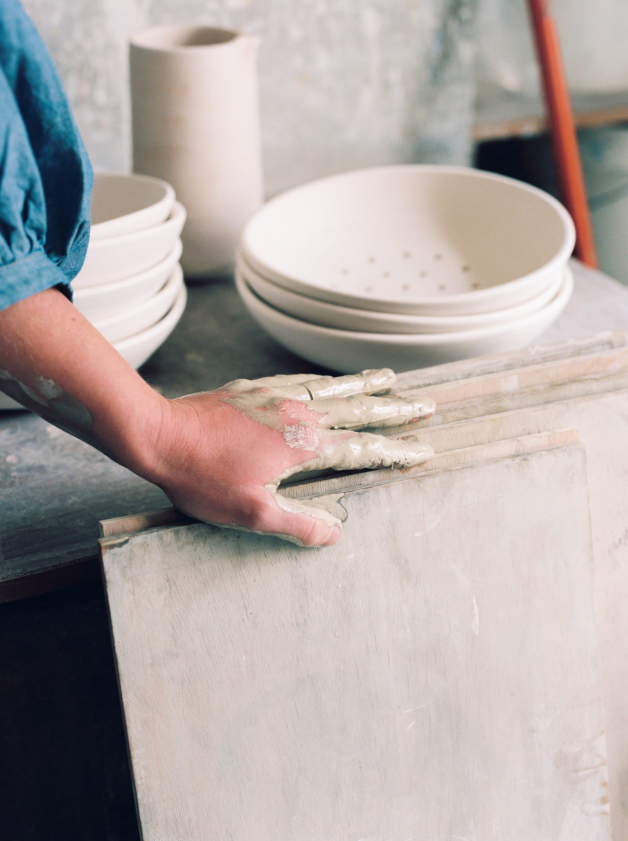
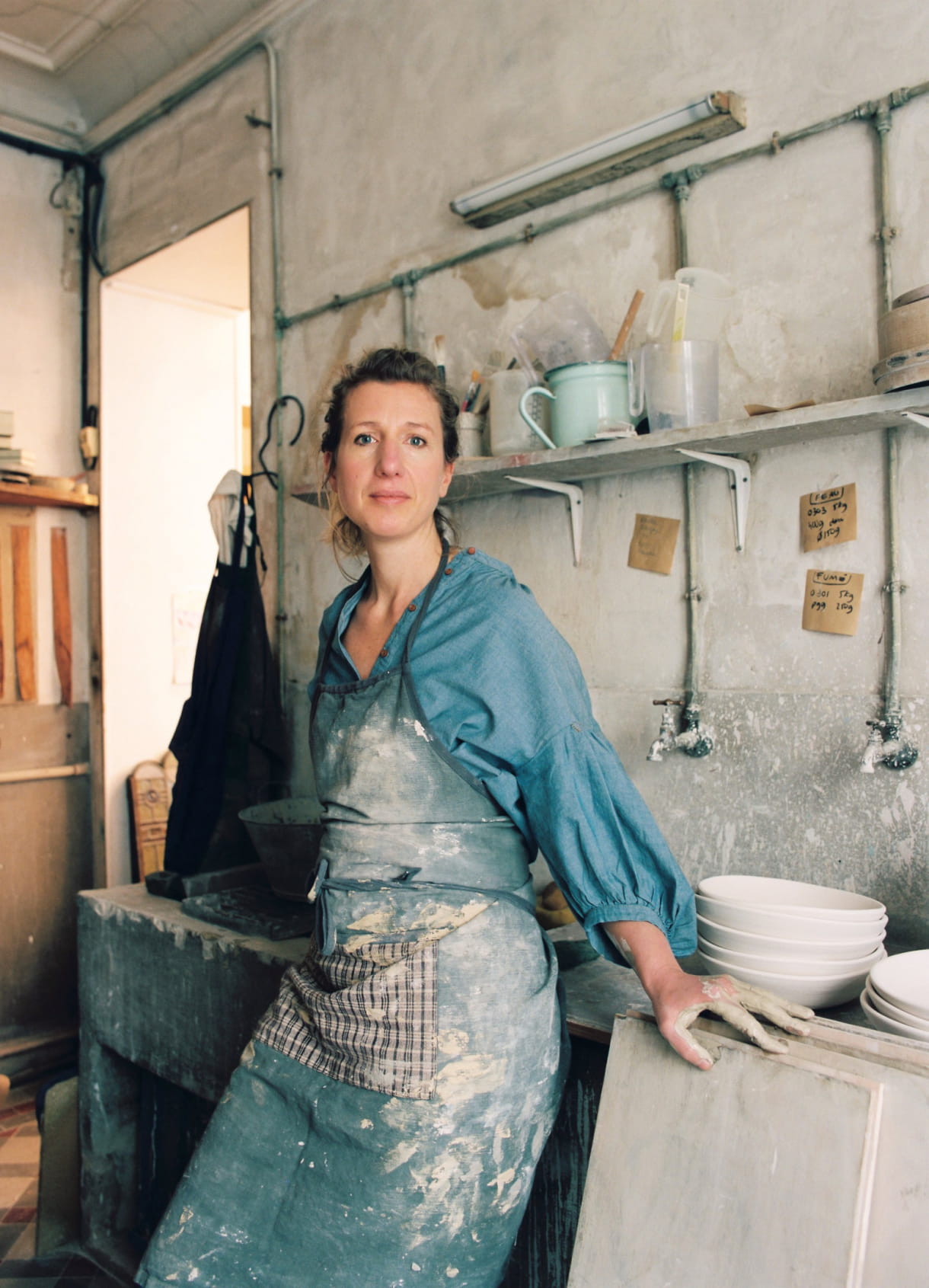
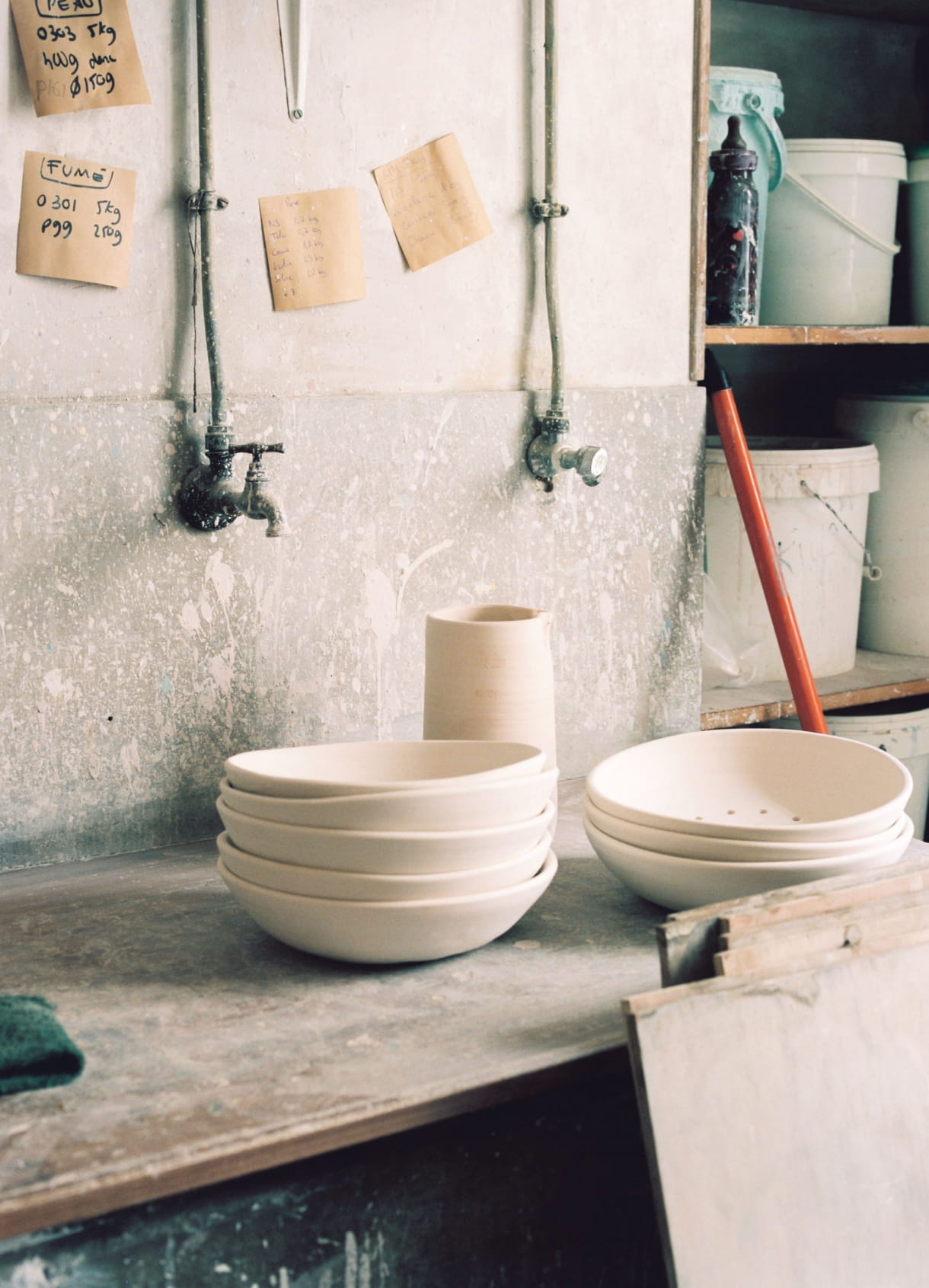
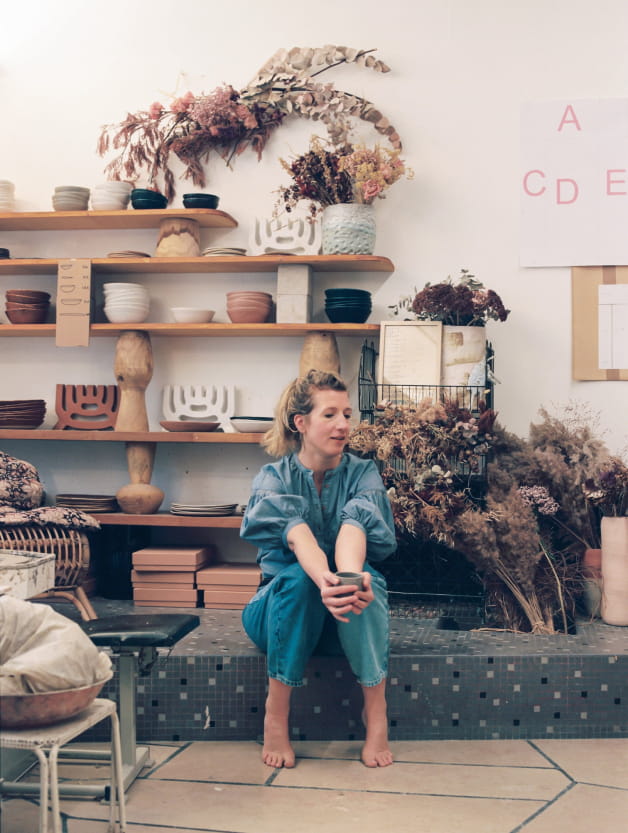
The piece you created for Sessùn's "Floraison Créative" carte blanche says something about family life, how did you imagine it?
I thought of it as a five-piece family portrait in bas-relief with the primary intention of evoking or representing the balance between the people that make up my family. The idea was to question how we all relate to each other in equilibrium (I'm laughing to myself because this is really my everyday issue). So I represented and symbolized with shapes and colors my own depiction of each of us: Constantin, our three children and me.
How did the production of this piece turn out?
At the first firing, I already had the impression that what I had thought of as the initial arrangement was perhaps not the most graceful. So I wondered if there could be another way of placing us in relation to each other, in our daily lives as well, and I came to the conclusion that the interesting part was that these pieces were not fixed, that their arrangement could change according to one's desires and moods, and that this mobility was perhaps even a solution in itself.
Then, at the color stage, one piece didn't come out the way I wanted it to and another one - supposed to introduce me - came out of the kiln broken. I redid both to be safe, but I wanted to keep the one that represented me with a crack.
Then, looking at the whole, I felt like adding another bas-relief, which changes the narrative of the project and questions the role of this new element: a ghost being, who is no longer part of this family perhaps?
What will you remember about this carte blanche project?
The process of creating this piece and the challenges I had to face show how much aesthetics influence the mind and the story we had told ourselves. All of this is intertwined. I enjoyed the fact of not having complete control over the story and of letting the initial idea evolve with things that I didn't necessarily see coming!

